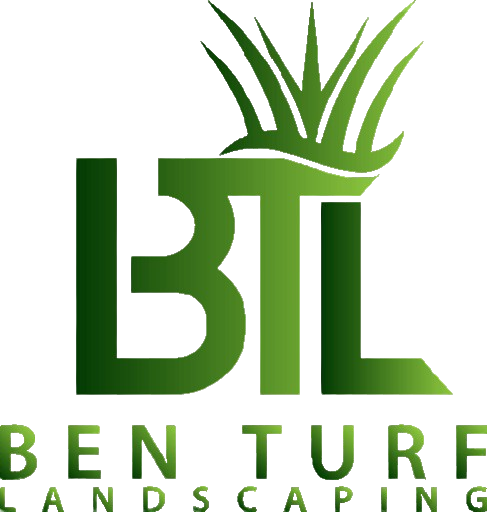Artificial turf is quickly gaining popularity among homeowners and businesses, and it’s easy to see why. It looks great and requires much less maintenance than natural grass. But if you’re thinking about making the switch, you might wonder, “How long will this last?” In this post, we’ll dive into what impacts the lifespan of artificial turf and share some handy tips to help you make the most of your investment.
When it comes to how long artificial turf can last, you’re typically looking at anywhere from 10 to 30 years. That timeframe depends on a few key factors, with the quality of the materials being the most important. High-quality turf made from durable materials like nylon or polyethylene will hold up better over time. The way it’s installed also matters—a professional installation ensures proper drainage and keeps the turf securely in place, which can really help it last longer.
Another big factor is how you use your turf. If it’s in a high-traffic area or gets a lot of sports action, you might see some wear sooner compared to a space that doesn’t get as much footfall. Plus, environmental elements play a role too; extreme weather, like hot sun or heavy rain, can impact the grass fibers. So, going with UV-resistant options can keep your turf looking vibrant and intact for years.
Even though artificial turf needs less care than natural grass, doing some routine maintenance can extend its life. Simple tasks like brushing to keep the fibers upright, rinsing off dirt and dust, and quickly addressing small repairs will go a long way. If you combine good upkeep with quality installation and materials, you’re setting yourself up for a long-lasting lawn.
Let’s not forget about our furry friends! Dogs can put some extra strain on artificial turf, especially if they’re playing hard. But if you choose high-quality turf designed to handle that kind of use, it can really help reduce the wear and tear.
Choosing the right artificial turf is super important. Look for turf made from high-grade materials like polyethylene or nylon—these options offer great looks and resilience over time. When shopping around, consider not just what it costs upfront but also the potential long-term benefits of investing in good quality.
Keep an eye out for turf that offers UV protection, which will help keep its color bright over the years. Also, selecting a sturdy backing material like latex or polyurethane gives you extra support, helping the turf stand up to stress better. While these features might bump up the initial cost, they often
Factors Affecting Artificial Turf Lifespan
Artificial turf usually sticks around for about 10 to 30 years, but how long it truly lasts depends on several factors. First up, the quality of the materials used really makes a difference. If you go for durable options like nylon or polyethylene, you’ll end up with stronger, high-quality grass that can take a beating without falling apart.
The way your turf is installed is another biggie. Having it done by professionals is key because they ensure everything’s set up just right, including proper drainage. That way, your turf won’t end up buckling or wrinkling, which can really shorten its lifespan. So, investing in a good installation is totally worth it!
Keeping your artificial turf in great shape is all about regular maintenance. The good news is that it needs way less attention than natural grass, but a little bit of care goes a long way in making it last. Just simple tasks like brushing it to keep those fibers standing tall, giving it a rinse to wash away dirt, and swiftly dealing with any small repairs can really extend its lifespan. When you mix proper care with top-notch installation and quality materials, you’re setting yourself up for a turf that stays beautiful and functional for years to come.
Even dogs can put a strain on artificial turf. The intensity of pet activity significantly impacts the fiber’s longevity, with some dogs contributing to wear and tear similar to athletic usage. However, high-quality turf made to withstand such pressures can minimize this effect. Ultimately, a balance between usage, maintenance, and material quality will determine how long your synthetic lawn will last.
Choosing the Right Quality Artificial Turf
Choosing the right artificial turf is super important! Going with high-quality materials like polyethylene or nylon means your turf will not only look great but also stand the test of time. Look for those made with a high stitch rate or solid tufting—these options are usually tougher and less likely to get damaged. So, when you’re shopping around, don’t just focus on the initial price tag. Think about the long-term perks you’ll get from investing in some really good quality turf!
Proper Installation Techniques
Proper installation is crucial in determining how long artificial turf will last. Professional services ensure that the turf is laid on a prepared surface with good drainage, preventing water pooling that could damage the turf. Experts use durable underlayment that supports the structure and secures the material in place, reducing buckling and wear. These advantages underscore the importance of hiring a qualified team for installation.
Avoid DIY repairs unless you’re sure of what you’re doing. Errors in leveling or seams can result in costly repairs or even turf replacement down the line. It’s best to hire professionals who can ensure a quality installation to help maximize your artificial turf’s lifespan.
Maintenance Tips for Long-lasting Turf
Good maintenance practices can extend the life of your artificial turf significantly. Regularly removing debris like leaves and dirt helps prevent moisture build-up, which can cause detrimental effects such as mildew. Occasionally washing the surface will remove dust and pollen, enhancing the vibrant look of your lawn.
Brushing the turf fibers keeps them upright and offers a more natural appearance. In fact, addressing minor damages promptly can prevent extensive repairs later on. Especially in high-traffic areas, attention to upkeep is both cost-effective and simple.
Heavy items and sharp objects should be kept off the turf to prevent unnecessary strain. Similarly, creating walkways in highly trafficked areas can help distribute wear more evenly. By following these simple maintenance tips, homeowners can enjoy their artificial grass for years, alleviating common wear issues effectively.
Comparing Lifespan with Natural Grass
In many cases, the lifespan of artificial turf surpasses that of natural grass, not to mention its numerous benefits in terms of maintenance. While natural lawns require constant watering, mowing, fertilizing, and reseeding, artificial turf provides a more enduring, vibrant landscape with substantially less effort.
Artificial grass is not only about longevity but also about contributing to a more sustainable environment. It cuts out the need for pesticides and conserves water, offering a green, good-looking lawn while avoiding ecological drawbacks associated with natural grass maintenance.
By choosing artificial solutions from reputable providers like Ben Turf, homeowners and businesses alike can combine aesthetic advantage with long-term functionality, making artificial turf the forefront choice for sustainable, low-maintenance landscapes.
Final Thoughts on Artificial Turf Longevity
Overall, with the right turf selection, proper installation, and diligent maintenance, artificial turf can offer years of beauty and functionality. By being mindful of the contributing factors to its longevity, you can enjoy your artificial grass for a long time.



